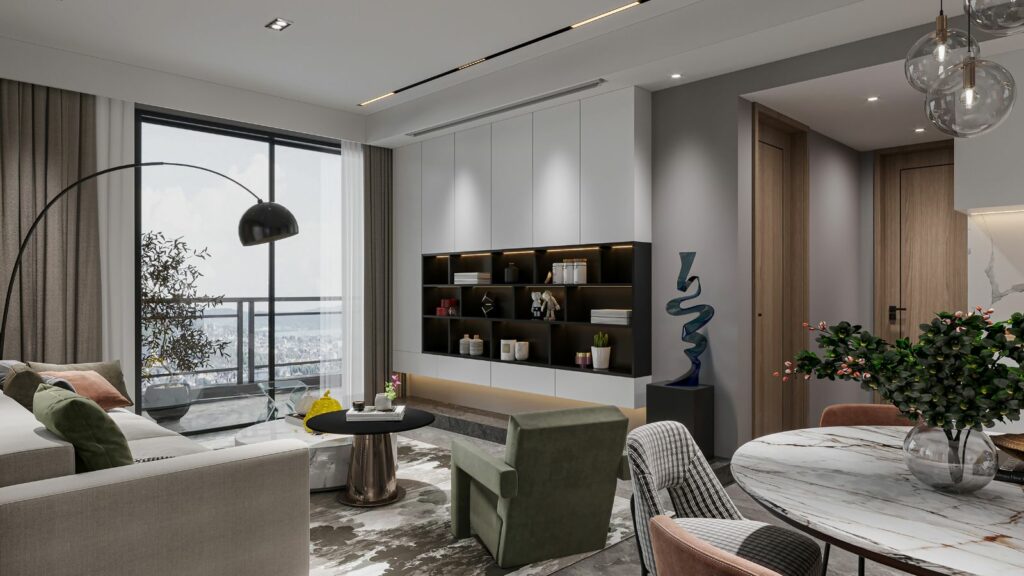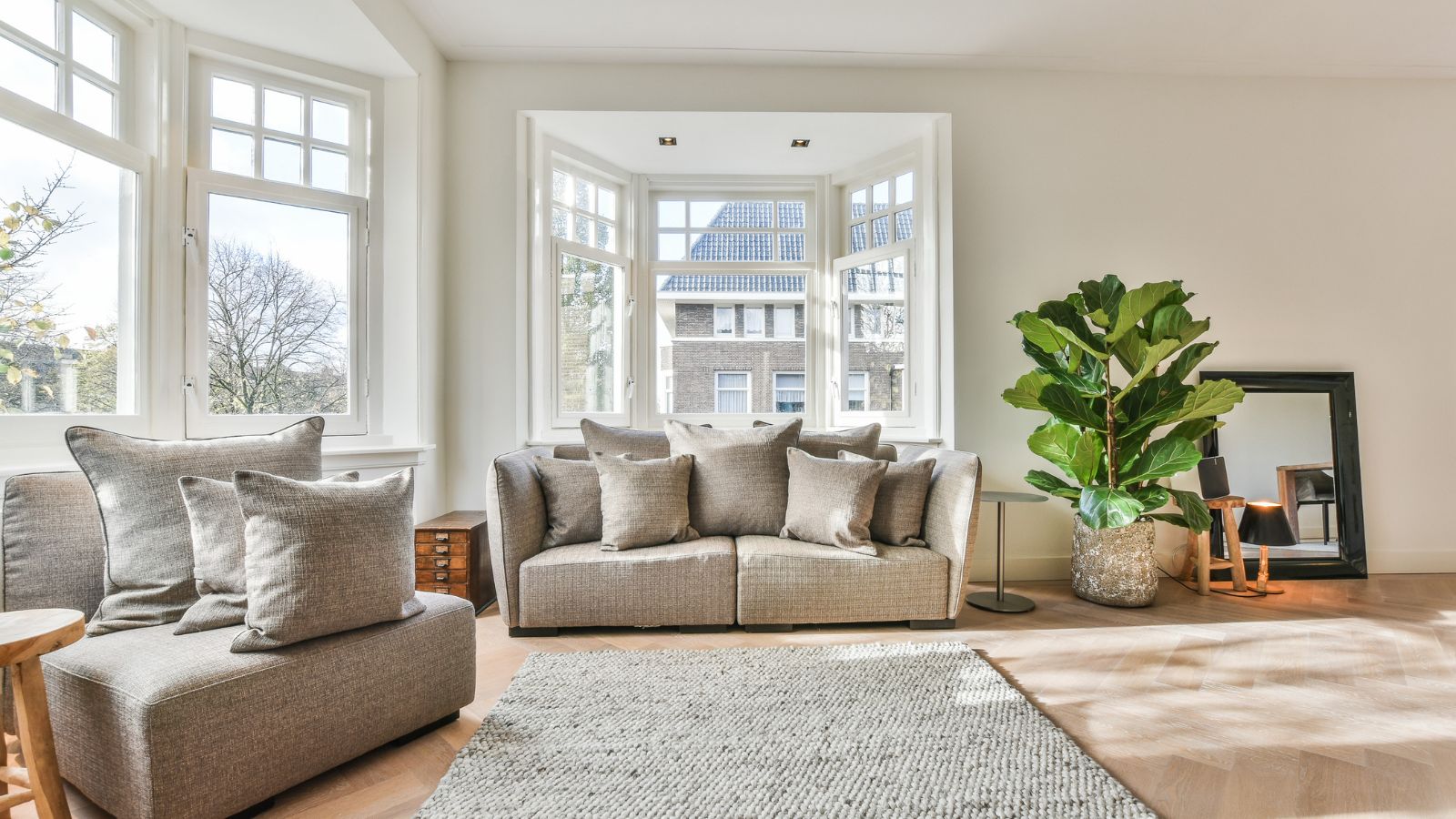Have you ever walked into a room that just felt right? It was welcoming, comfortable, and everything seemed to be in its perfect place. Now, think about a room that felt cluttered, awkward, or just plain off. What was the difference?
The answer lies in understanding something that many homeowners struggle with: creating the perfect balance between ambiance and functionality. This article will demystify the art of creating a room that is both beautiful and practical. We’ll uncover the secrets to mastering the dual goals of ambiance—the mood and feeling of a space—and functionality—how well it works for your lifestyle.
A well-designed room isn’t just about impressing guests; it’s about improving your daily life, reducing stress, and creating a personal sanctuary that truly supports you. When you get this balance right, your home becomes more than just a place to live—it becomes a place that energizes, comforts, and inspires you every single day.
The Art of Ambiance: Crafting the Mood
It’s More Than Just Decoration; It’s About Emotion
Creating the right ambiance goes far beyond choosing pretty accessories or expensive furniture. It’s about understanding the intangible elements that make a space feel alive and welcoming. The best rooms tell a story and evoke specific emotions the moment you step inside.
Think of ambiance as the personality of your room. Just like people, some rooms feel warm and inviting, while others feel cool and sophisticated. Some spaces energize you, while others help you unwind. The secret is being intentional about the mood you want to create.
The Power of a Cohesive Color Palette
Color is one of the most powerful tools in creating ambiance, yet it’s often misunderstood. The key isn’t just picking colors you like—it’s understanding how those colors work together and how they affect your emotions.
Warm vs. Cool Tones: Colors have psychological impacts that are surprisingly consistent across different people. Warm tones like reds, oranges, and yellows can energize a space and make it feel cozy and intimate. They’re perfect for gathering spaces like dining rooms or family rooms where you want to encourage conversation and connection.
Cool tones like blues, greens, and purples create a sense of calm and serenity. These colors are ideal for bedrooms, home offices, or any space where you want to promote relaxation and focus.
The 60-30-10 Rule: Professional Aspen interior designers swear by this simple formula for creating balanced color schemes. Use 60% of your room for a dominant color (usually a neutral for walls and large furniture pieces), 30% for a secondary color (accent furniture, curtains, or rugs), and 10% for a bold accent color (pillows, artwork, or decorative accessories).
This rule creates visual harmony while still allowing for personality and interest. It’s a foundational principle that prevents rooms from feeling either too boring or too chaotic.
Layered Lighting: The Ultimate Mood-Setter
If there’s one mistake that kills ambiance faster than anything else, it’s relying on a single overhead light. Great rooms have multiple layers of light that can be adjusted throughout the day and for different activities.
The Three Essential Lighting Layers:
• Ambient Lighting: This is your overall illumination—ceiling fixtures, recessed lights, or chandeliers that provide general light for the entire room.
• Task Lighting: Focused light for specific activities like reading, cooking, or working. Think table lamps by reading chairs, pendant lights over kitchen islands, or desk lamps in home offices.
• Accent Lighting: Used to highlight architectural features, artwork, or create visual interest. Picture lights, uplights behind plants, or LED strips under cabinets all fall into this category.
Dimmer Switches: This is the easiest and most cost-effective way to instantly transform any room’s ambiance. Dimmer switches allow you to go from bright and functional during the day to intimate and cozy in the evening with just a simple adjustment.

The Science of Functionality: Designing for Real Life
A Beautiful Room That Doesn’t Work is a Failed Design
No matter how stunning a room looks in photos, if it doesn’t support your daily life, it’s not good design. Functionality is about understanding how you actually use your space and designing around those real needs—not just how you think you should use it.
The most successful rooms are those that make your life easier, not harder. They anticipate your needs and provide solutions before problems arise.
Mastering the Flow: The Importance of Space Planning
Traffic Flow: One of the first things experienced Aspen interior designers consider is how people move through a space. You need clear pathways for movement, with at least 3 feet of walking space in main traffic areas. Furniture should guide movement naturally, not create obstacles.
Consider the daily rhythms of your household. Where do people naturally want to walk? Are there any pinch points where traffic gets congested? Good space planning feels effortless—you shouldn’t have to think about navigating your own home.
Furniture Arrangement: Here’s a secret that transforms amateur room layouts into professional-looking designs: don’t push all your furniture against the walls. Instead, create conversational groupings by “floating” sofas and chairs away from the walls.
This technique creates more intimate spaces within larger rooms and makes everything feel more intentional and designed. Position seating pieces so people can easily make eye contact and conversation flows naturally.
Smart Storage Solutions for a Clutter-Free Life
The old saying “a place for everything, and everything in its place” isn’t just about being organized—it’s about creating functional beauty. Clutter is the enemy of both ambiance and functionality.
Multi-Functional Furniture: Look for pieces that work double duty. Ottomans with hidden storage can hold blankets while providing extra seating. Coffee tables with drawers keep remotes and magazines organized but accessible. Beds with built-in storage eliminate the need for bulky dressers in smaller bedrooms.
Vertical Space: Many homeowners forget about their walls when thinking about storage. Wall-mounted shelves and tall bookcases draw the eye upward, making rooms feel larger while freeing up valuable floor space. This is a go-to strategy that seasoned interior designers employ, especially in smaller homes where every square foot matters.
Bringing it All Together: The Marriage of Ambiance and Function
Where Style Meets Practicality
The magic happens when ambiance and functionality work together seamlessly. The best room designs don’t force you to choose between beauty and practicality—they deliver both in equal measure.
Case Study: The Living Room
Ambiance Elements: A soft, plush area rug anchors the seating area and adds warmth underfoot. A thoughtful color palette using the 60-30-10 rule creates a relaxing vibe that invites you to settle in and stay awhile. Dimmer switches on the main lighting allow you to adjust the mood from bright and energetic for game night to soft and cozy for movie watching.
Functionality Features: The coffee table includes a lower shelf for storing magazines and books, keeping surfaces clean but items accessible. End tables provide convenient spots for drinks and table lamps offer task lighting for reading. The furniture layout encourages conversation while maintaining clear pathways to other areas of the home.
Case Study: The Home Office
Ambiance Elements: Good natural light creates an energizing atmosphere during the day, while a comfortable, ergonomic chair makes long work sessions pleasant rather than painful. Personal touches like plants, artwork, or family photos make the space feel welcoming rather than sterile.
Functionality Features: Excellent task lighting on the desk prevents eye strain during detailed work. Accessible file storage keeps important documents organized but within reach. The layout minimizes distractions while keeping frequently used items easily accessible.
Many successful home renovation projects start by addressing both ambiance and functionality from the planning stage, ensuring that beautiful spaces also work beautifully for daily life.
Creating Your Perfect Balance
The secret to designing rooms that truly enhance your life lies in understanding that ambiance and functionality aren’t competing goals—they’re partners. When you think about how you want a room to feel just as much as how you need it to work, you move beyond simple decoration and start truly designing.
Start with one room and apply these principles gradually. Notice how small changes in lighting can transform the mood, or how rearranging furniture can improve both flow and conversation. Pay attention to what works and what doesn’t in your daily routines.
Remember, the most beautiful room in the world is meaningless if it doesn’t support your real life. But a purely functional space without thought to ambiance will never truly feel like home. The magic happens in the balance—creating spaces that are both soul-stirring and supremely livable.
By mastering this balance, you’re not just decorating your home; you’re designing a life that feels as good as it looks, every single day.

